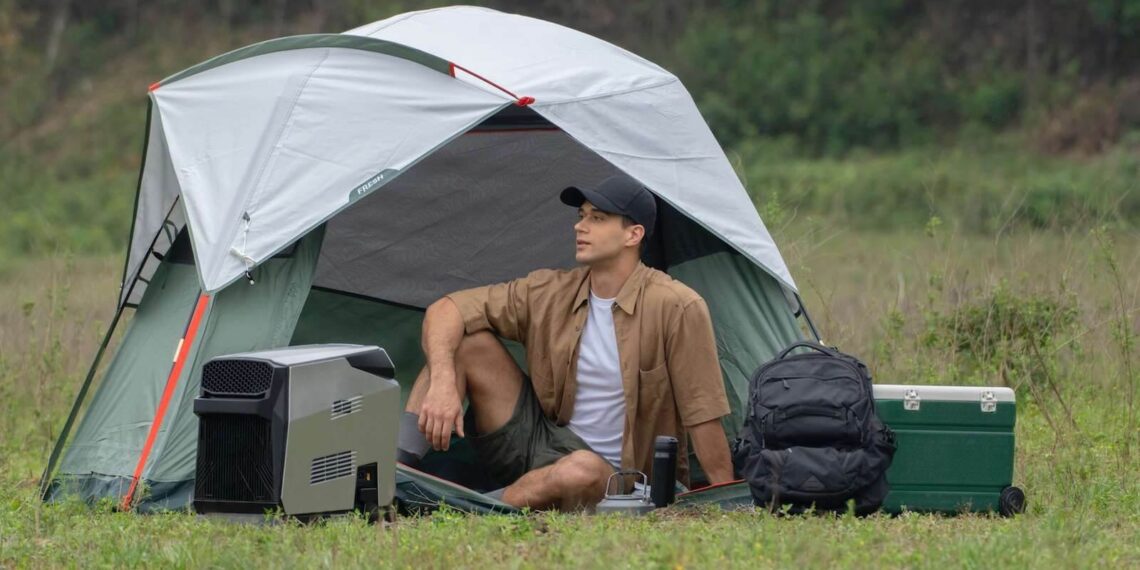Camping is a beautiful way to appreciate the outside and the wildness. Still, you don’t have to leave all your technology at home. Cellphones, laptops, tablets, portable speakers, action cameras, and laptops are frequently brought along.
These products need the ability to charge their cells, or they will become worthless after a few days; however, not all campsites offer outlets. The solution is to bring a portable power bank with you.
So, here we are discussing some portable power products that can be used while camping.
Table of Contents
12-Volt Portable Battery
Plugging into a cigarette lighter socket and using the car batteries is one way to get electricity when camping. It will charge cell phones and a couple of small items, but you can’t leave it on for too long, or the battery charge will be too low for the car to start.
If you take it this way, you’ll need a power inverter to plug into the 12-volt outlet. The BESTEK 300W Dc Power DC 12V to 110V AC Car Inverter with 4.2A Multi USB Car Adapter is one. It provides regular power outlets as well as USB connections.
It’s easiest to get a transportable 12-volt power source if you wish to use a 12-volt cell like your car for your electricity demands. These are equipped with adapters, outlets, and screens that display the remaining charge. You can also use specific 12-volt power packs to jumpstart your car battery. These are comparable to pedal generators in price.
Solar Power
Solar power is a win-win situation for obtaining electricity while camping. It’s pure, quiet electricity that’s also inexpensive once you’ve purchased a solar system. To get the most of the available sunlight, set up portable solar panels in the sunniest part of your tent.
Of course, you’ll need to depend on hot days for power. So, you’ll require rechargeable batteries as an element of your solar camping gear.
A portable power pack is included in most solar camping systems. You’ll need a rugged, waterproof, and lightweight kit outside. Your rechargeable battery should include an attachment to charge your vehicle whenever the sun chooses to play peek-a-boo. Without destroying your vehicle’s battery, you’ll need an inverter to charge the power pack securely. Charging without one poses a safety risk and may lead to the battery’s destruction.
Portable Power Banks
You may want a waterproof and durable power bank in damp, humid situations or on treks that can withstand dampness, total immersion, and bumps and knocks. Look for an IP (International Protection) certification product, commonly stated as two letters or numbers, such as IPX6 or IP67. The level of protection given against invasion, dust, accidental touch, and water is classified by this standard. To charge a modern smartphone, you’ll need a portable phone charger between 5,000 and 10,000mAh.
Power banks made for the outdoors are often equipped with LED lights that can be used as flashlights. In addition, it is being impacted and resistant to water. As well as, power banks with inbuilt charging cords can be valuable extra features.
Other products feature built-in or add-on solar cells that can supplement power with solar energy. Solar panels are becoming increasingly efficient, making them feasible for anyone expecting lots of time off the grid. Most solar panels charge a battery bank slowly and steadily over many hours, while others can be plugged immediately into your device.
Pedal Generator
Another electricity source is a pedal generator, which is human power. A simple one uses standard bike pedals and is compact and light enough to take on a camping journey. It can charge devices, tiny appliances, torch batteries, and even 12-volt car batteries.
Because a pedal generator, unlike other power generators, a pedal generator does not store energy from cycling, so you will always have to cycle to get electricity when camping. The portable kind must be attached to a base to comfortably pedal for an extended time.
The pedal generating works effectively, according to users, and can charge two devices at once, such as a mobile phone and a tablet device. For a few hundred dollars, you can get a mobile pedal engine. It is cheaper than the other generators.
Thermoelectric Generator (TEG)
This generator is much less efficient and costlier than a gasoline-powered engine. Still, it outperforms it in every other manner. Temperature differences can be converted into electricity using a TEG. The generator gathers energy released by the thermal contrast between two points in a camping environment.
You would use a TEG in the wilderness by starting a fire and heating it with banked coals. It is the advantage of this generator. The disadvantage of a thermoelectric is slightly more expensive than a gasoline generator.
A TEG cookstove can provide enough power to run small appliances. The heat difference created by wood burning in the stove offers a 5 to 12-watt power for recharging cell phones, tablets, and LED lights.

